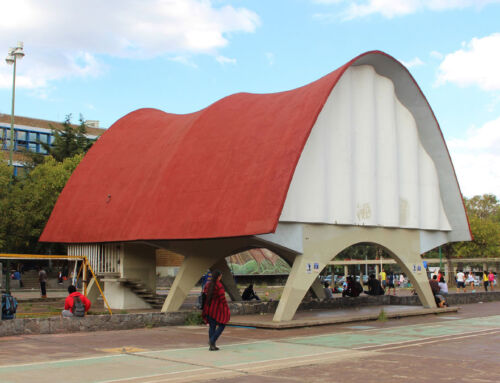We have recouped an architectural project that in 2014 CNN described as “eye-popping”, a building located on the banks of the Pearl River in the Chinese city of Guangzhou.

The 138-metre-high, 33-storey building is the world`s tallest circular building. In fact, the Guangzhou Circle is taller than any other vertical circular building on the planet. These include the 121 m high, 23-storey Al Dar headquarters in Abu Dhabi, United Arab Emirates, the 97 m high, 21-storey Sunrise Kempinski Hotel in Beijing, China, the 100 m high Fang Yuan office building in the city of Shenyang, China, and the 100 m high Fang Yuan office building in the city of Shenyang, China, located in the city of Shenyang, also in China, whose design resembles an old coin (declared, by the way, one of the world’s ugliest buildings after a vote organised by CNN itself), or the Radisson Blu Hotel in Frankfurt, Germany, with 96 m and 19 floors.

With the design of the Guangzhou Circle, the Italian architect Joseph Di Pascuale won the architectural competition for the headquarters of the Hongda Xingye Group, an industrial group dedicated to hydrogen energy, new materials and environmental protection, and for the new headquarters of the Guangdong Plastic Exchange, the world’s largest market for plastic raw materials. As Di Pascuale says of the architectural concept for the Guangzhou Circle, its design aims to “define a landmark building that is perceived as genuinely Chinese, without falling into the stereotype of the Western skyscraper“.

To achieve this, Di Pascuale was inspired by the symbol of an ancient Chinese dynasty that ruled the city around 2,000 years ago: the double jade disc. The two circular façades with a central span of 48 m in diameter give the building its characteristic disc shape, which represents the symbol of that dynasty. In the words of the architect, “the building reflected in the water of the river forms exactly the same pattern: a double jade disc”.

In addition, the double circular shape of the Guangzhou Circle refers to the number 8 and the symbol of infinity. And according to tradition in some Eastern countries, including China, 8 is considered a lucky number and has “strong propitious value” (for example, the Beijing Olympics opened at 8:08 PM on the 8th of the 8th in 2008).

But the design of the Guangzhou Circle also refers to the “squaring of the circle“, a question to which the scholars, mathematicians and scientists of the Italian Renaissance paid special attention. So, in order for the building to be inhabitable, the two circular facades had to contain and structurally support orthogonal-design spaces. Hence the 33 floors they enclose form volumes that protrude progressively from the ends in cantilevers of up to 25 m.
We encourage you to take a look at the project, as it was presented in 2013, in this video:






